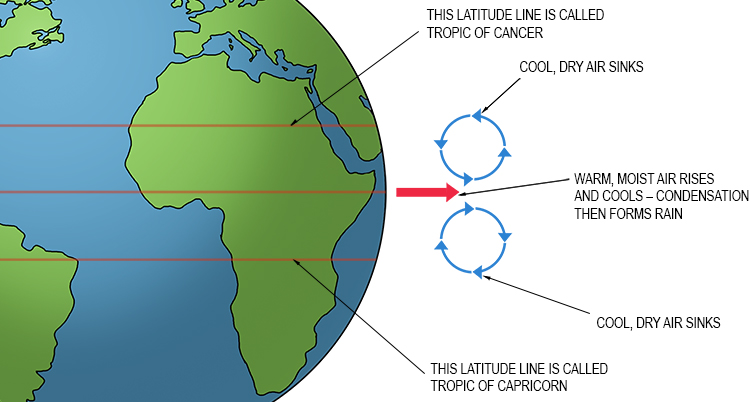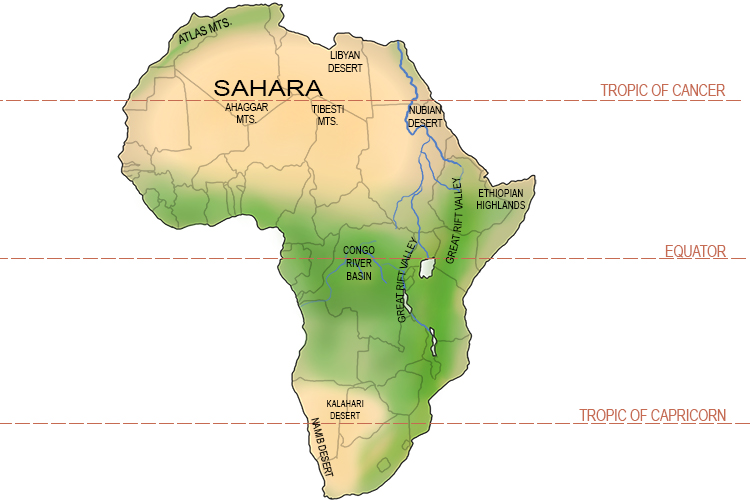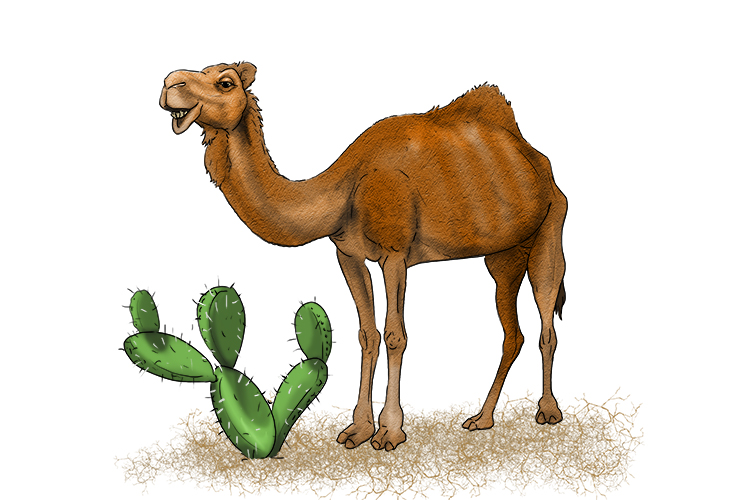Biodiversity – THE VARIETY OF LIFE FOUND IN DESERTS WHICH ARE HOT, AS OPPOSED TO COLD DESERTS
We know that biodiversity means life variety, or the variety of life in the world or a specific habitat.
To remember the meaning of the term Biodiversity, use the following mnemonic:
Bio-diversity = Life-variety
Hot deserts are areas with less than 250mm of rain per year.
Hot deserts are found around 2600 kilometres (1600 miles) either side of the equator i.e along the latitude lines called the Tropic of Cancer and the Tropic of Capricorn.

Air at the equator rises and cools, condensation then occurs forming rain. The air continues north and south until it nears the latitude lines called the Tropic of Cancer and the Tropic of Capricorn. At this point, the air is very dry and no condensation can form ( no rain can occur). The air drops down to earth and this is where deserts are formed.

An overview of Africa's deserts and rainforests shows more clearly how hot deserts sit around the latitude line of the Tropics of Capricorn and Cancer.
The largest hot desert is the Sahara Desert.
In deserts such as this, there is little biodiversity, as few plants and animals have adapted to survive in these harsh conditions.

Cactus and camels have adapted to live in hot deserts.




